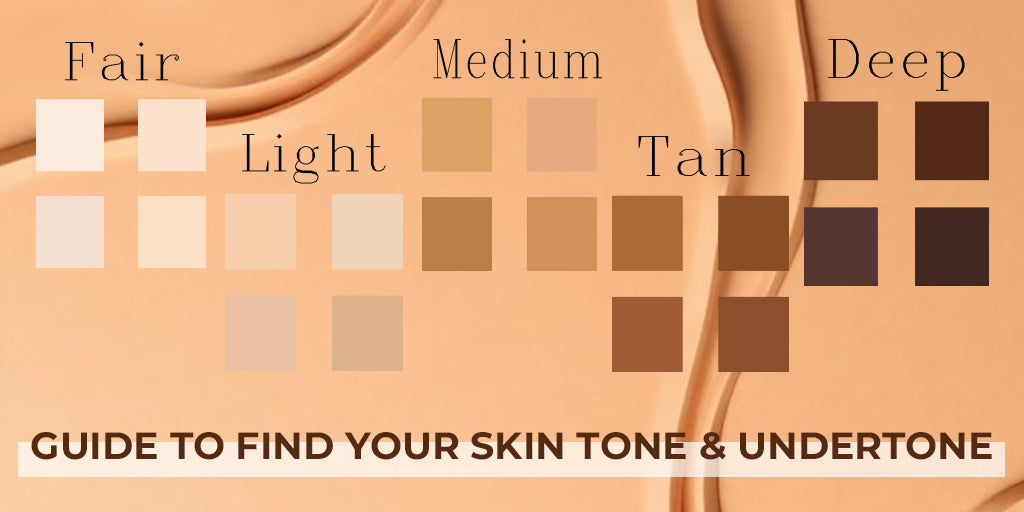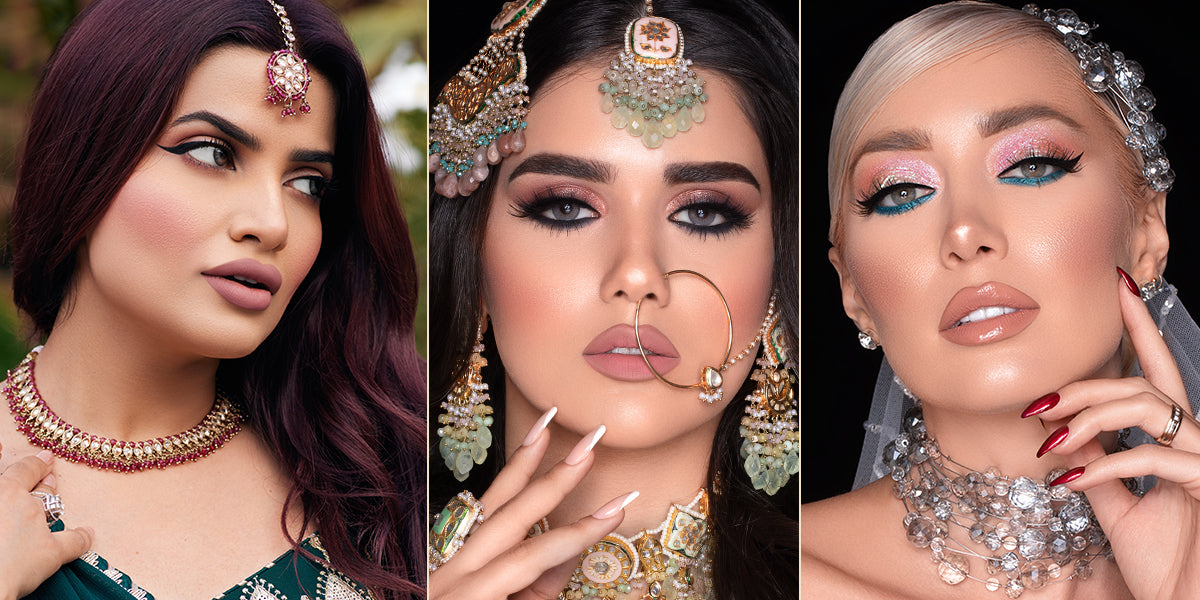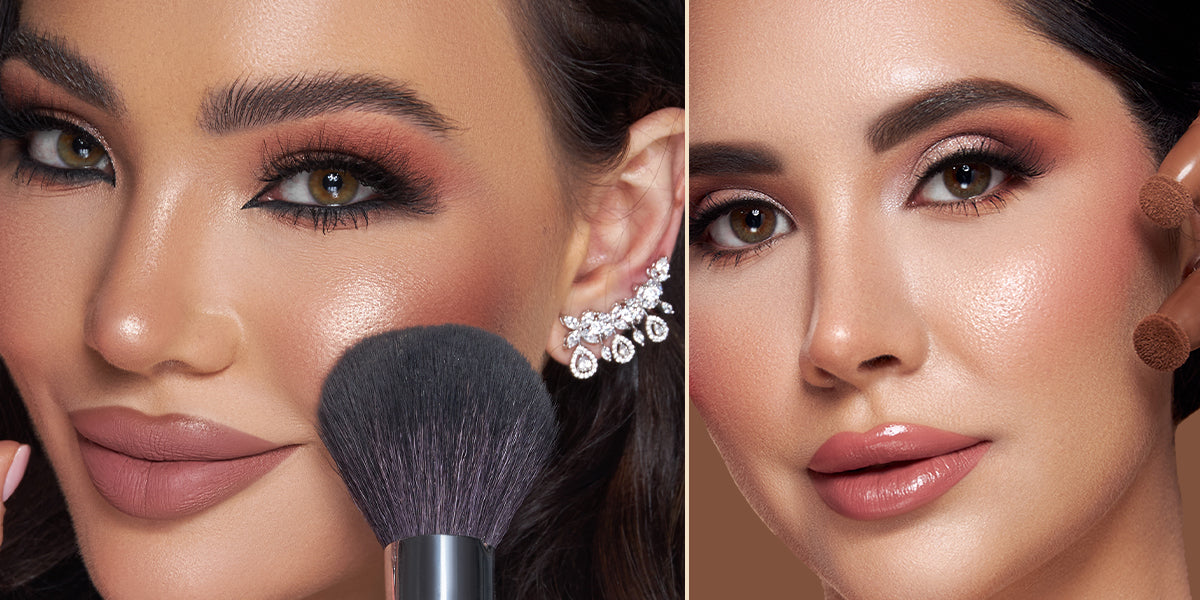Ever wondered why a foundation shade looks flawless on your friend but off on you? Or why do certain clothing colors make you glow while others dull your appearance? Being aware of your skin tone and undertone is essential. This knowledge helps you choose the perfect makeup and guides you in selecting skincare and clothing that enhances your natural beauty.
If you’ve been searching for how to know your skin tone or how to find skin colour, you’re in the right place. This guide simplifies the process with easy tips and tricks, ensuring you find your perfect match. By the end, you’ll be confident to pick the best products for your complexion and feel radiant daily!
What is Skin Tone?
Your skin tone is the natural hue of your skin. Knowing your skin tone will help you choose makeup, clothes, and hairstyles that complement your appearance. Skin tones generally fall into three categories:- Fair/Light: Light or pale skin that may burn easily in the sun.
- Medium/Olive: A warm, golden hue that tans more easily.
- Dark/Deep: Rich, dark shades of skin that are less prone to sunburn.
When you understand your skin tone colour, you can make better choices for products that enhance rather than mask your natural beauty.
What is an Undertone?
Your undertone is the pale hue that sits beneath the surface of your skin tone. No amount of tanning or sun exposure changes this color. There are three types of undertones:- Cool Undertones: Hints of pink, red, or blue.
- Warm Undertones: Golden, yellow, or peachy hues.
- Neutral Undertones: A combination of warm and cool hues.
Knowing your undertone is key when figuring out how to know your skin tone for makeup and clothing. It helps you pick shades that blend seamlessly and enhance your complexion.

H2 - How To Determine Skin Complexion?
Identifying your skin tone is the first step toward choosing the right makeup, clothing, and skin care products to make your natural beauty shine. You can use a few simple methods to determine your skin tone easily.
Natural Light Observation
Step outside or stand near a window in natural light. Check whether your skin seems pink, peach, warm (olive), yellow, golden, or blue. This can help you determine your skin tone.
Comparing Against White or Neutral-Colored Fabrics
Place a white or light-colored cloth next to your face. If the fabric makes your skin appear more colorful, you probably have a cool undertone. Your tone is likely warm if it seems yellow or golden.
Use of Professional Color-Matching Tools
Beauty stores and professionals often have tools that can help determine your skin tone. These devices analyze your skin and suggest products that suit your complexion, making finding the right makeup and skincare easier.
H2 - How to Identify Your Undertone?
Identifying your undertone is just as important as knowing your skin tone. Your undertone is the subtle hue that affects how your skin reacts to certain colors and products. There are several simple methods you can try to determine your undertone.
Vein Test
One of the simplest methods for determining your undertone is the vein test. Just take a peek at your wrist's veins under natural light. It’s a sign of a cool undertone if they appear blue or purple. You have a warm undertone if your veins seem to be greenish. If you can’t decide whether they’re blue or green, it could mean you have a neutral undertone, which is a mix of both.
Jewelry Test
Another simple test to help identify your undertone is to see which type of jewelry flatters your skin more. You probably have a cool undertone if silver jewelry suits you best. On the other hand, if gold jewelry suits your skin better, you probably have a warm undertone. You most likely have a neutral undertone if gold and silver match your appearance.
White Paper Test
Hold a plain white sheet of paper next to your face for this test. Take note of your skin's response to the white paper. If your skin has a pink or red hue, it suggests that you have a cool undertone. If it appears yellow or peachy, you likely have a warm undertone. You may have a neutral undertone if neither color is apparent.
Skin Tone and Undertone in Makeup Selection
Choosing makeup that complements your skin tone and undertone is essential for creating a natural, glowing look. Here’s how to get it right:
Foundation and Concealer
The foundation is the base of your makeup, so it’s crucial to pick the right shade. For cool undertones, foundations with a pink, rosy, or blue base will work best. People with warm undertones should opt for yellow, peach, or golden-based foundations. If you have neutral undertones, a more balanced or slightly peachy foundation will blend seamlessly with your skin. To make sure the foundation matches your natural color, it's crucial to test it on your jawline.
Complementary Eyeshadow, Blush, and Lip Colors
Once you’ve chosen your foundation, it’s time to select your eyeshadow, blush, and lip colors. Cool pinks, lavender, purple eyeshadows, and cool-toned lipsticks are all excellent choices for people with cool undertones. People with warm undertones look great with bronze, copper, and earthy shades on their eyes and coral or peach lipstick for the lips. If you have neutral undertones, try warm and cool shades to discover what looks best on you.
Skincare and SPF
Your skincare routine is as important as your makeup for a flawless look. Those with cool undertones may benefit from cooling skincare products that hydrate and refresh, while those with warm undertones should focus on richer, more nourishing formulas. Regardless of the undertone, always apply SPF as a protective base to keep your skin safe from UV damage, which also helps makeup last longer.
Skin Tone and Undertone in Clothing Choices
Choosing the right clothes that align with your skin tone and undertone can enhance your natural beauty and confidence. Here’s a quick guide to help you pick the best colors for your wardrobe.
How Color Theory Applies to Clothing
Color theory suggests that cool undertones look best in shades like blue, purple, and cool-toned pastels, while reds, oranges, and earthy tones like brown compliment warm undertones. Neutral undertones can rock a mix of both, embracing various colors.
Choosing Colors That Enhance Natural Features
To enhance your natural glow, choose clothes that match your undertone. If you have cool undertones, opt for icy blues or rich purples. For warm undertones, go for earthy shades like olive green or golden yellows. Neutral undertones allow flexibility so that you can try warm and cool tones.
Seasonal Color Palettes
Seasonal color choices can also help you dress for the season:
- Spring: Soft pastels and peachy shades work well for warm undertones.
- Summer: Cool colors like baby blue and lavender are ideal for cool undertones.
- Autumn: Earthy colors like mustard and brown flatter warm undertones.
- Winter: Deep, cool colors like navy or black look great on cool undertones.
Final Thoughts
Making the right skincare, cosmetic, and fashion options depends on knowing your skin tone and undertone. Knowing what works best for you, whether you have cool, warm, or neutral undertones, ensures a more harmonious and flattering look. With these tips, you can confidently choose the right foundation, blush, eyeshadow, and clothing that complements your natural beauty.
To explore a wide array of cosmetic products online tailored to your unique tone, Daily Life Forever52 offers an expertly curated selection of makeup and skincare designed for all skin types. With their products, you can easily enhance your look and radiate confidence every day.



